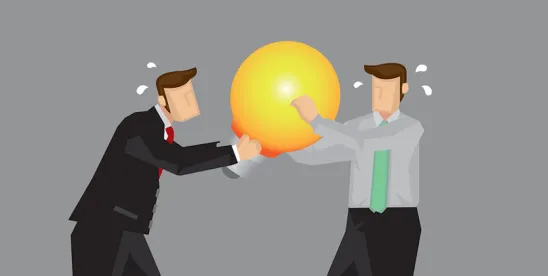Recently, tech titans Jack Dorsey and Elon Musk made headlines by calling for the radical dismantling of the intellectual property (IP) system—urging us to “delete all IP.” Their stance may seem superficially appealing at a time when artificial intelligence (AI) is destabilizing traditional IP boundaries and intensifying legal uncertainty. But this perspective is not just short-sighted—it betrays the foundational American principle that innovation is best nurtured through enforceable rights.
The Constitutional Foundation of IP Law
Intellectual property is not a vestigial tool of corporate control or government overreach—it is embedded in the DNA of our constitutional system. Our Constitution grants Congress the power “[t]o promote the Progress of Science and useful Arts, by securing for limited Times to Authors and Inventors the exclusive Right to their respective Writings and Discoveries.”1
Our Founders deliberately enshrined IP rights not to stifle creativity, but to spur it. Temporary monopolies promote disclosure, encourage commercialization, and ultimately fuel progress.
Why IP Matters Even More in the AI Age
The rise of AI magnifies challenges to IP regimes. Because AI replicates core human faculties like creativity and problem-solving, it complicates how we assign exclusive rights in inventions and creative works.2 Yet these complexities are not reasons to discard IP law—they are reasons to adapt and strengthen it. If Dorsey envisions “better ways to pay creators,” even those must rest on the foundational principle that creators own what they produce.
The Patchwork of IP: Each Branch Serves a Distinct Purpose
The Dorsey-Musk critique flattens IP into a single, monolithic enemy. But IP law is a mosaic—each piece crafted to serve specific economic and societal purposes:
- Patent law incentivizes disclosure and the advancement of science by awarding exclusive rights to inventors for novel and non-obvious inventions;
- Copyright law incentivizes original expression by awarding exclusive rights to creative works;
- Trademark law is about trust and consumer protection, not innovation per se. It ensures brand integrity and helps consumers make informed decisions; and
- Trade secret law protects business-critical information that gives firms a competitive edge, especially when patenting is not feasible or desired.
Copyright enforcement typically requires proof of actual copying, making it a more direct and fact-specific inquiry. Patent enforcement, by contrast, can extend to independently developed inventions that merely practice a claimed method or apparatus—often ensnaring innovators unaware of the patent’s existence. Conflating the two overlooks the fundamental differences in enforcement and scope. Using the excesses of patent litigation to justify dismantling copyright law only further erodes the already fragile rights of creators in the digital age.
Climbing then Pulling up the IP Ladder Behind Them…
For startups, patent law is scaffolding—supporting their climb toward market viability. But for tech giants like Musk and Dorsey, who’ve already reached the summit, IP law may now feel like a constraint. Their proposal to "delete all IP" reads less like a call for open innovation and more like an effort to pull up the ladder behind them.
LLM and AI providers don’t depend on patents to protect their dominance. Their competitive edge lies in trade secrets—like model weights (the internal parameters of AI systems) and the massive, proprietary datasets used in training—which are nearly impossible to reverse engineer. Add to that their unmatchable first-mover advantages, and it’s clear why they no longer need IP—but smaller competitors still do.
A Responsible Path Forward: Reform, Not Repeal
Without intellectual property and laws to enforce it, companies would have no recourse against copycats or bad actors.
We do need to rethink IP in the age of AI, including the following reforms:
- clearer standards for “sufficiency of human contribution” in AI-assisted inventions;
- better rules to address copyright liability in training datasets; and
- guidelines for AI’s role in generating patentable subject matter, especially under §101 eligibility rules that have grown increasingly narrow post-Alice.3
But these reforms depend on having a system to reform. We cannot foster the development of an AI ecosystem of startup or Small and Medium-sized Enterprise (SME) AI developers without providing enforceable rights so that they can protect their innovations—including against infringement and misappropriation by the AI behemoths, including Musk.4 Nor can we effectively regulate AI’s misuse, combat algorithmic bias, or hold dominant players accountable without the transparency that IP law—and especially patent law—can help facilitate. The Constitution doesn’t promise innovation despite IP; it promises innovation through IP.
1 U.S. Const., Art. I, Sec. 8, Cl. 8.
2 See Jim W. Ko & Paul R. Michel, Testing the Limits of the IP Legal Regimes: The Unique Challenges of Artificial Intelligence, 25 Sedona Conf. J. 389–541, at 433–82 (2024).
3 See id. at 540–41.
4 xAI, Musk’s artificial intelligence firm, acquired X in March 2025 and leverages the vast user data of the former Twitter to develop and enhance its AI models.




 />i
/>i

